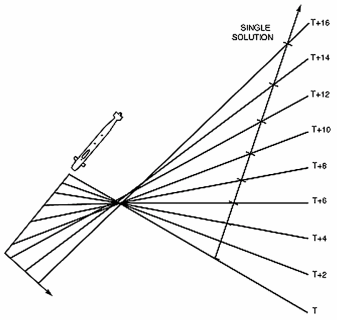
|
|
SUBSIM: The Web's #1 resource for all submarine & naval simulations since 1997
 |
SUBSIM: The Web's #1 resource for all submarine & naval simulations since 1997 |
|
|
 07-14-17, 05:01 AM
07-14-17, 05:01 AM
|
#1 | ||
|
Planesman
 Join Date: Aug 2005
Posts: 186
Downloads: 51
Uploads: 0
|
Quote:
Quote:
|
||

|

|
 07-14-17, 06:26 AM
07-14-17, 06:26 AM
|
#2 |
|
Sailor man
 Join Date: Oct 2013
Posts: 44
Downloads: 5
Uploads: 0
|
Thanks for the out of context wall of text. The quoted part in my previous post is still nonsense. Adding more words before and after it won't change that.
__________________

|

|

|
 07-14-17, 06:45 AM
07-14-17, 06:45 AM
|
#3 |
|
Sailor man
 Join Date: Oct 2013
Posts: 44
Downloads: 5
Uploads: 0
|
Sorry for the spite reply, let me explain my comment further
The quoted part is terribly wrong since it implies that the geographical disposition of the sub allows you to perform triangulation of the target. Since the target is moving, that's bollocks. It can be true only if the target is stationary which is extremely rare. That's how you determine the positions of fixed sites on the shore, and not how you perform TMA for moving targets.
__________________

|

|

|
 07-14-17, 06:46 AM
07-14-17, 06:46 AM
|
#4 |
|
Engineer
 |
So, what you're saying is, the whole concept of TMA in Fast Attack and Dangerous Waters is BS, or is it just the techniques they encourage?
I'm asking because they seem legit. If you get a constant set of bearings and the target isn't changing course/speed a single course change can give you a pretty good solution. |

|

|
 07-14-17, 06:56 AM
07-14-17, 06:56 AM
|
#5 | ||
|
Sailor man
 Join Date: Oct 2013
Posts: 44
Downloads: 5
Uploads: 0
|
Quote:
Quote:
TMA is an art of relative movement, it's conducted against a moving element. It's essentially a process by which the target bearing rate is collected on different legs of the sub. The more you get, the better the solution will be. To put it in DW terms - The range in which a single target strip's dots will stack against the lines of bearing will be restrained to a single position - that position is the solution.
__________________

|
||

|

|
 07-14-17, 07:09 AM
07-14-17, 07:09 AM
|
#6 | |
|
Engineer
 |
Quote:
BTW, the TMA in Fast Attack is very similar to DW except you have separate stations for plot where you move the "speed ruler" on the map and the fire control station where you manipulate the Range, Course and Speed to stack the "contact dots" (forgive me for using my own names for these things) in a vertical line. This is the plot station:  and this is how fire control looks: 
|
|

|

|
 07-14-17, 07:14 AM
07-14-17, 07:14 AM
|
#7 | |
|
Sailor man
 Join Date: Oct 2013
Posts: 44
Downloads: 5
Uploads: 0
|
Quote:
It's very much possible that the TMA model in FA is great, but the manual just explains it wrong. In fact, I pretty much believe this is the case.
__________________

Last edited by Destex; 07-14-17 at 08:23 AM. |
|

|

|
 07-14-17, 10:14 AM
07-14-17, 10:14 AM
|
#8 | |
|
Planesman
 Join Date: Aug 2005
Posts: 186
Downloads: 51
Uploads: 0
|
Quote:
 Probably its me, but maybe you're missing the point of what the manual suggests. It's obvious that if both emitter and receiver are moving, it wouldn't make sense to change course in order to triangulate the target's position, but as far as I understand it, it's not what it's suggesting either. As I understand, it suggests to change course every 10-12min intervals in order to verify the alignment of the dots with the reference line in Fire Control Console so as to validate the solution. 
|
|

|

|
 |
|
|
